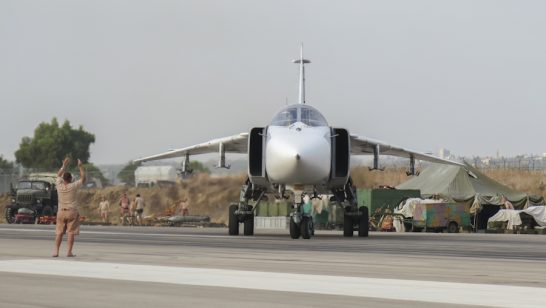
In the wake of the 2016 Warsaw Summit conclusions, the North Atlantic Treaty Organisation is getting ready to step up Allied forward presence on its North-Eastern and South-Eastern flanks, in response to increased Russian activity. The minutiae are still being thrashed out, but preparations will include four rotational multinational battalions in Estonia, Latvia, Lithuania and Poland, and a multinational brigade in Romania. These efforts will complement work undertaken by the Alliance since the Wales Summit in 2014 to strengthen the NRF (Nato Response Force) and to build up its high readiness component (Very High Readiness Joint Task Force). The Alliance’s focus is thus very much on growing NATO’s readiness to respond to potential rapid Russian troop deployment.
And yet, despite all the efforts geared towards increasing military readiness, is it clear what these “more ready” NATO forces will be ready for? Paradoxically, be it on its Eastern or Southern border, the short answer is: not really. In fact, the way NATO looks at the readiness of its forces paints only a partial picture. Across the Alliance, readiness is used chiefly as a technical variable that focuses on what researcher T. Harrison would term “flying hours, steaming days, tank miles, and training events” – to the exclusion of other facets of what it means to be ready to use force. As a recent study for NATO ACT shows, the definition of readiness across NATO countries measures the ‘inputs’ that are necessary to maintain the capacity to use force rapidly. Readiness is understood as the ability of a military unit to perform the task that is assigned to it. It includes manpower, size of the unit (e.g. an army battalion) and equipment (e.g. a particular weapon system) – as such it encompasses spare parts, maintenance, supply and logistics for equipment, but also such variables as training, morale, food, as well as “attracting, retaining [and] educating […] top quality military personnel” for manpower.
Logically, this method yields a technical, quantitative, measurable picture of readiness across NATO countries – low, high, or very high. Force elements at readiness levels (FEAR) are classified. They involve a number of thresholds which are set by NATO, and assess the ability to fulfil a number of tasks and operate in an international environment. In this respect, NATO readiness is very much a “stamp” that reflects capacity to be certified, although it is up to Allies themselves to conform to these thresholds.
But the capacity to use force requires more than a reliable statistical aggregate of flying hours, steaming days, tank miles and training events. It requires the capacity to operate in multinational coalitions with a sufficient degree of interoperability, the availability of enablers and the ability to project those combat ready assets swiftly to a given theatre. More broadly, the broader look on readiness also supposes that these interoperable, combat-ready assets are adapted to the threats they were deployed to face, from Libya to the Baltics, and are able to have more than a fleeting impact on them when projected there. Finally, it supposes that political leaders, nations and populations are willing to project such force – and more crucially still, that they understand and agree about what they are trying to achieve by doing this.
The criticism levelled at most European militaries tend to focus on operational readiness and willingness to use force. Conversely, the American military since the turn of the century has seldom been criticised for lack of combat readiness or willingness to use force, but rather for lacking a solid sense of what it is attempting to achieve, and is actually achieving. All this suggests that “readiness” narrowly defined, whilst necessary and important, is not sufficient in the real world: it captures only part of what it is to be ready to use force.
A more detailed look at current risks in the Baltics, Ukraine, Libya or the Mediterranean might encourage one to distinguish four layers of readiness: combat readiness, operational readiness, strategic readiness, and cultural readiness.
The current readiness debate tilts decidedly towards combat readiness of assets, and how to achieve it. Operational levels of readiness – that is, the ability to project combat-ready assets, quickly, to a given theatre, to operate in national frameworks or multinational coalitions – are less easily captured by existing readiness metrics. Also, they do not address the output that such inputs can achieve – so that in operational terms, it is hard to say whether such inputs will lead to appropriate outcomes, such as tactical victory in the case of a Russian encroachment in a Baltic country.
Being prepared and able to deploy and use force to reach a positive effect should be termed ‘strategic’ readiness. It supposes a shared sense of what one’s means might achieve, being aware of what one is attempting to achieve through such means, and also the capacity to use them. In turn, this entails that the political actors who define the objectives are endowed with a world view that is sufficiently clear, that they have the honesty to articulate it and the courage to explain it.
Shoring up strategic readiness requires inflexibly investing in our analytic capacity of understanding the world: doing more robust contrarian work, prospective thinking, scenario building, looking far more closely into potential short-term impacts and long-term effects, and then linking this back to resources and capabilities. This would enable NATO to reach a better understanding of the positive and negative impact militaries can have on threats in given situations, which requires an understanding of the context in which they operate and of how they can effect change within it.
Strategic readiness is underwritten by what might be termed cultural readiness: a state of mind that supposes being willing to project and use force to reach a calculated end. One may have assets that are combat ready but without being prepared to deploy them, being willing to use them, or having a sense of what they might achieve or why to use them. Conversely, one might be willing to use force, but without having assets that are combat ready or deployable. But in effect the outcome will be the same: a failure to grasp the purpose of readiness, understood as the capacity to use force to reach a calculated end.
Although strategic and cultural readiness are less visible in military thinking, they nonetheless have palpable military effects – quite the same way that lack of combat readiness will have a substantive tactical and operational impact. The four aspects of readiness are thus all necessary to employ force, although neither is sufficient in isolation. Yet, there remains an inbuilt leaning within the NATO militaries that focuses on combat readiness. There is comparably less inclination to examine what hard statistics find trickier to capture and quantify. But the present bias towards the comfort that quantifiable units provide should not dispense us from trying to assess what these tools are for, and the added value that they can actually provide.
Warsaw has undeniably beefed up NATO readiness on its Eastern flank. It is now time to try to build a more realistic understanding of readiness, which better straddles the political-military divide and therefore more reliably covers what it means to be ready to use force to reach a calculated, positive impact. One way of achieving a finer sense of military readiness would be to combine the hard and ‘soft’ indicators and build a methodology that focuses on outputs and tangible effects. Otherwise, readiness metrics will simply constitute what T. Harrison calls a ‘proxy measure’ for what NATO wants to and can achieve, stifling rather than highlighting some problematic issues that NATO should focus on in the coming months and years.
The opinions articulated above represent the views of the author(s), and do not necessarily reflect the position of the European Leadership Network or any of its members. The ELN’s aim is to encourage debates that will help develop Europe’s capacity to address the pressing foreign, defence, and security challenges of our time.



